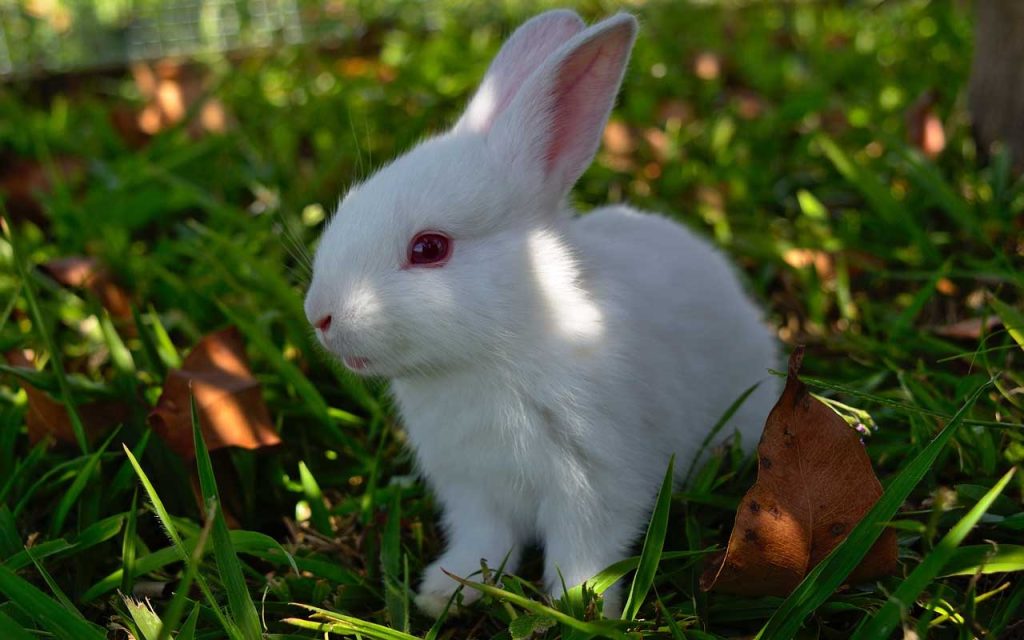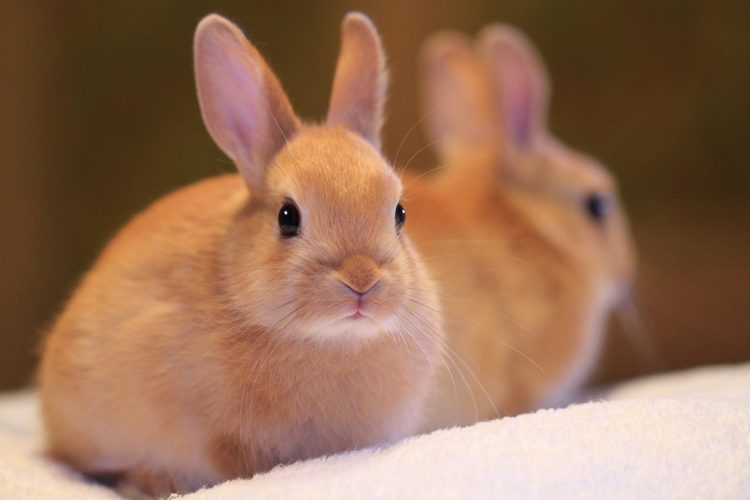Just like our own nails, a bunny’s paws also need some TLC! They’re not just an accessory for their adorable ‘hop, skip and jump’, but they play a crucial role in your furry friend’s health and comfort.
Believe it or not, their nails can either be a ticket to hoppy days or a hurdle to their bunny frolics. So, how long should a rabbit’s nails be? You’ve hopped to the right place!
As a whisperer to our fluffy companions, I’m here to help you transform into a rabbit pedicure maestro. Let’s embark on this intriguing journey into the world of rabbit nail care. Don’t worry, no magic hat required! Grab your clippers and bunny, let’s hop to it!
In a hurry? Here’s a quick & short answer that will help you save some time:
Healthy rabbit nails should typically measure around 1/4 to 1/2 inch long, though it varies slightly with different breeds and individual rabbits.
If you can hear their nails clicking on the floor, or the nails start curling, it’s time for a trim, ensuring your bunny’s comfort and mobility.
Related: How Long Do Lop Eared Rabbits Live?
The Importance Of Nail Maintenance For Rabbits

Maintaining a rabbit’s nails is integral to its health and well-being. Without proper nail maintenance, the rabbit can suffer from pain or infection caused by long nails that are not trimmed properly.
Nail trimming for rabbits should be done regularly to ensure their comfort and safety. Nails grow continuously throughout a rabbit’s life, so keeping them at an appropriate length with regular trimmings is essential.
Long nails may make movement and grooming difficult for the animal, causing matting or skin irritation. Long nails may wrap over the paw pads and cause pain and infections.
To avoid these difficulties, owners should check their pet’s nails regularly and file or cut as required to maintain optimal lengths.
If sized right, human fingernail clippers work well for this purpose, but rabbit clippers work best. The owner must also be careful while trimming sensitive parts like paws.
Rabbit owners who lack sufficient experience in nail trimming should seek guidance from a veterinarian.
Trained professional before attempting to do it on their own. This will help ensure the process is performed safely without harming the animal.
With adequate knowledge and practice, even novice owners can learn how to perform primary nail care on their pets with ease over time.
Understanding The Anatomy Of Rabbit Nails
Rabbit nail maintenance is essential to keeping pet rabbits healthy and content. Understanding the anatomy of a rabbit’s nails, from their structure to how they should be groomed appropriately, can help owners provide better care for their furry companions.
Keratin, a protein found in claws and hooves, makes up rabbit nails. The quick, a blood artery, feeds the nail at its base. This location may hurt and bleed your rabbit. Therefore, while cutting nails, avoid this region.
Rabbits that spend most of their time inside have longer and more curled nails than those who reside outside with grassy spaces. Some breeds get longer nails, whereas others don’t.
Knowing the anatomy of your rabbit’s nails helps ensure proper grooming techniques by avoiding any damage to sensitive tissue, such as cutting into the quick.
However, it is still important to understand what constitutes an appropriate length for your particular breed and lifestyle needs. An experienced veterinarian can guide identifying the correct size for your rabbit’s nails to keep them in optimal health.
Identifying The Proper Length For Rabbit Nails
As humans, we often take the things that come naturally to us for granted. We don’t think twice about trimming our nails when they become too long; however, it is difficult for a rabbit. After all, rabbits cannot reach their own feet! How do we know when to give them a nail trim?
When it comes to keeping your pet’s claws in check, there are several vital factors you should consider:
Size of the Rabbit: The size of the rabbit will determine not only the number of nails needed but also its shape and length.
Fur Length: If the fur on your rabbit’s paws is longer than usual, then this could mean that the nails need to be trimmed more frequently.
Activity Level: Active rabbits tend to wear down their nails quicker than those who stay indoors or move around less frequently.
Environment: The type of surface your rabbit lives on can be essential in determining how often its nails need to be trimmed. Hard surfaces like concrete floors cause nails to grow faster than soft surfaces such as grass or carpeting.
By examining these four factors, owners may instantly detect when their rabbit needs a nail clip and keep them healthy and happy.
Maintaining your bunny’s nail length is easy with knowledge and care! Now that we know rabbit nail length ideals, let’s talk about tools.
Related: What Kills Rabbits At Night? – Full List Of Predators
Tools Needed To Keep Rabbit Nails Trimmed
When trimming rabbit nails, the right tools are essential for a successful and stress-free experience. The following table outlines the three top nail trimmers available on the market:
| Tool | Pros | Cons |
|---|---|---|
| Guillotine | Quick & easy | Risk of injury |
| Grinder | Gentle | Loud noise |
| Scissor | Precise cuts | Difficult to use |
The guillotine is the quickest and easiest to operate, but its shape makes it prone to overslipping and cutting your pet. Grinders are mild since they grind down the nail instead of cutting it, but they may be noisy.
Finally, scissors provide exact control over nail removal, but only experienced users should use them.
Choose a rabbit-specific instrument to match their precise size and shape between blades/grinding wheels. Look for corrosion around metal components, change blades periodically, and minimize dirt and dust, which may irritate or infect open wounds.
If you use the right instrument, trimming your rabbit’s nails may be fun and bonding. Now that we know what we need to trim our dogs’ claws, let’s find the best way to do it safely and successfully.
The Best Method For Trimming Rabbit Nails

Trimming a rabbit’s nails is essential to ensuring their good health and comfort. To trim a rabbit’s nails, one must first understand its ideal length.
The best length for rabbits’ nails is when they barely touch the ground when standing on all fours. This helps ensure that the feet are adequately stressed due to too long claws digging into them.
If the nails are allowed to grow too long, this can lead to discomfort, chronic pain, and potential infections from bacteria entering under their nail bed.
It is also important to note that some rabbits may have different needs depending on their breed or lifestyle. For example, if your rabbit has soft fur instead of stiff hair on its paws.
Shorter nails would be more suitable than longer ones as they could cause problems with movement and walking due to slipping. Rabbits living outside may need longer nails so they can dig up grass or other plants without damaging their paws.
If you decide to trim your rabbit’s nails, you can use simple clippers made for rabbits, guinea pigs, and hamsters or electric trimmers, which make cutting easier but can cut off too much too quickly.
Use clippers instead of an electric trimmer unless you’re skilled. Finally, thank and soothe your pet with goodies after grooming to create trust!
Make sure the rabbit nail trimmer fits properly in your hands and provides enough leverage to cut neatly with minimum effort.
With careful attention to the size and form of the animal’s claws before starting work, a suitable technique throughout, and patience until completion, owners should have no trouble keeping their bunnies’ claws healthy.
Related: How Many Rabbits Can Live Together In One Cage?
Tips To Make Trimming Easier
Meticulous upkeep of a rabbit’s nails is essential for its overall health and well-being, as untrimmed nails can cause discomfort or infection.
Trimming the nails may seem daunting to some, but with proper knowledge and preparation, it will be a breeze. To begin the process, one must understand how long should rabbits’ nails be.
Rabbit nails should be at least 1/4 inch long, depending on breed and size. Trim if more is visible. Because their thicker hair covers longer nails.
White-furred dogs need more regular trims. whether you’re unclear whether your pet needs its nails clipped, ask a physician or groomer.
Knowing when your rabbit needs claws cut and the various clippers is important. Finding a clipper that fits your animal’s claw form is crucial to avoid harm.
Nail bed misalignment. Use sharp household scissors carefully and angle them away from the quick to avoid harm. Trimming requires stress management.
Squirming and biting increase the danger of injury to you and your pet due to fear. Gentle handling and having everything you need nearby help a lot throughout this procedure.
As does having someone else around to help if required. These suggestions make clipping your bunny’s paws easier! Knowing whether a rabbit’s nails are too long saves time and ensures optimal comfort for our beloved buddies.
How To Tell If A Rabbit’s Nails Are Too Long
Rabbits’ nails should be trimmed regularly to ensure their health and comfort. It is essential for owners to know how long a rabbit’s nails should be and when they may require professional attention from a veterinarian.
One way of determining if the length of the rabbit’s nail needs to be addressed is by assessing its position while standing on a flat surface.
If the ends of the toes are level with or slightly higher than the fur on the feet, then this indicates that the nails are at a desirable length.
If the fur appears elevated above the tips of the toes, it likely means that too much growth has occurred, and trimming is necessary.
Additionally, overgrown nails can cause discomfort in rabbits, leading them to try scratching themselves excessively or walking only on their hind feet instead of all four legs; both signs indicate long nails need to be tended to immediately.
Furthermore, untrimmed for extended periods can even cause serious foot problems such as infection and abscesses due to splitting or improper healing during shedding cycles.
Nail clipping does not have to be intimidating, although it requires patience and gentleness from owners until their pets become comfortable with handling procedures.
To determine whether it is time for professional help maintaining your pet’s nails, look out for any changes in behavior or gait associated with potential pain caused by longer-than-usual claws.
If so, contact your vet right away since they will possess the specialized equipment needed to safely address longer nails without causing injury to your pet or yourself in case you decide to take care of it yourself.
With proper assessment and intervention, rabbits will remain healthy and happy, living comfortably with properly groomed claws.
When To Contact A Veterinarian For Nail Maintenance

Rabbit owners should be aware of their pet’s nail length and notice when it has grown too long. Not only can the nails become uncomfortable for rabbits.
But they may also prevent them from moving correctly or cause injury if left unchecked. Therefore, rabbit owners must know how long their pets’ nails should be and when contact with a veterinarian might be necessary.
Most healthy house rabbits’ nails should not exceed the tips of their toes when standing upright on all fours. If the nails appear longer than this, it may be time for a trim.
While some experienced owners are comfortable performing these trims themselves at home using clippers designed for animals, others opt to find an experienced groomer or veterinarian specializing in small mammals such as rabbits.
In cases where a rabbit has been injured or shows signs of ill health through its behavior or physical appearance, contacting a veterinarian immediately is often recommended.
Due to potential infection risks associated. With improper nail trimming techniques. Additionally, any rabbit showing signs of limping.
Difficulty walking could require professional medical attention since overgrown nails can lead to painful claw beds, which make movement difficult and uncomfortable for the animal.
It is thus wise for rabbit owners to stay observant of their pet’s nails and refer them promptly to specialized professionals whenever they suspect something isn’t right; doing so early could save both money and discomfort.
Properly maintaining your pet’s claws will ensure they remain healthy and happy without the risk of pain caused by overly-long nails.
Related: When To Wean Meat Rabbits? – All You Need To Know
Conclusion
Nail maintenance for rabbits is vital to their overall health and well-being. Knowing how to trim a rabbit’s nails properly can ensure their comfort, safety, and good quality of life.
With the right tools, method, patience, and consistency, it is possible to maintain your rabbit’s nails at a healthy length.
It is highly recommended that nail trims be done regularly to avoid issues related to overly long claws or painful ingrown nails.
Additionally, if you are still determining the proper length for your bunny’s nails or encounter any other difficulties.
With nail care, contact your veterinarian without delay. They can advise keeping your rabbit’s claws healthy and trimmed down appropriately.





